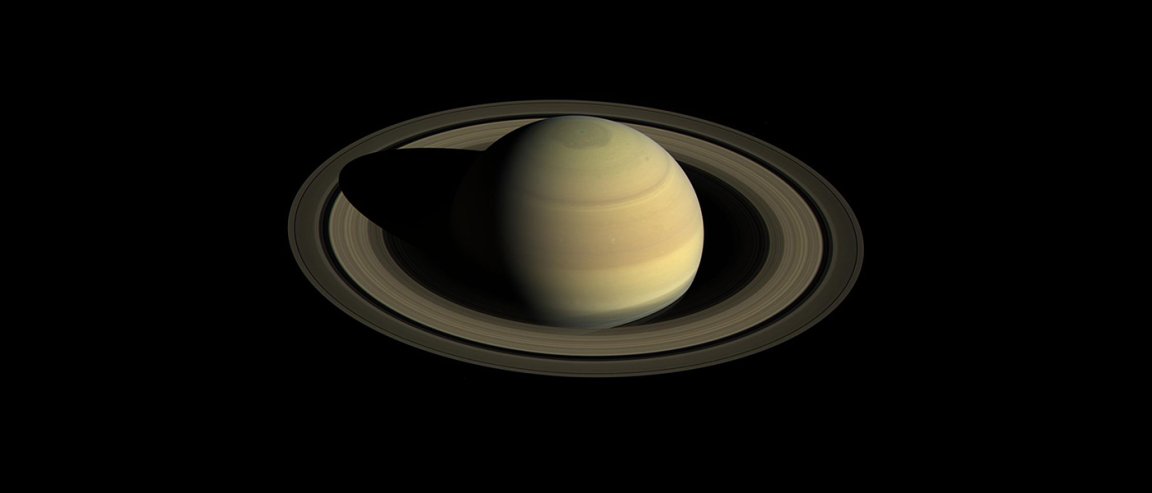
Going In For A Kiss
On November 30, after dancing with Saturn for 12 years, NASA’s Cassini spacecraft is swooping in for a kiss, plunging very close to the planet’s unexplored F ring to collect samples of ring particles and faint gas molecules while maintaining a distance safe enough from the debris — over 4,850 miles (7,800 kilometers).
A gravitational nudge from one of Saturn’s moons, Titan, will propel Cassini along as it enters the first phase of what NASA is calling “the mission’s dramatic endgame.” From tomorrow through April 22, the craft will plunge through the unexplored area in the planet’s outer rings every seven days for a total of 20 times.

“We’re calling this phase of the mission Cassini’s Ring-Grazing Orbits, because we’ll be skimming past the outer edge of the rings,” said Linda Spilker, Cassini project scientist at NASA’s Jet Propulsion Laboratory in Pasadena, California. “In addition, we have two instruments that can sample particles and gases as we cross the ringplane, so in a sense Cassini is also ‘grazing’ on the rings.”

An Epic Finale
Launched in 1997, the Cassini spacecraft’s mission was to probe and image Saturn, its moons, and its rings, beginning with its arrival in 2004 until its expected end in 2008. Since then, however, the mission has been extended twice, and it has been responsible for some of the biggest breakthroughs in space exploration: its landing on Titan was the first ever successfully completed in the outer solar system, it captured the first off-Earth hurricane, and it identified the first lakes anywhere beyond Earth.
This new phase of Cassini’s mission will provide in-depth, high-quality, high-resolution views of Saturn’s moons, main rings, and the small moonlets mixed in with them. It might also be able to capture images of dust clouds as positions become favorable, such as when the Sun backlights the planet in Cassini’s view in March.

No doubt Cassini’s ring-grazing phase will be phenomenal, but so will the way the spacecraft intends to take its final bow. To make sure it doesn’t collide with Saturn’s moons and potentially infect them with Earth microbes when it runs out of fuel, Cassini will instead repeatedly dive through the narrow gap between Saturn and its rings, over and over as it slowly runs out of fuel and eventually falls down into Saturn’s embrace.
With Cassini’s mission complete and the craft making its final resting place on the planet it has studied for a dozen years, NASA will focus on its next generation of spacecrafts, including Orion, which will send astronauts on missions beyond the Moon. We’ve learned a lot from Cassini, and now it’s time to look to the future of space exploration.